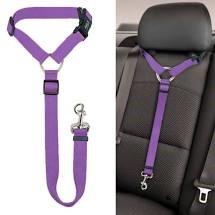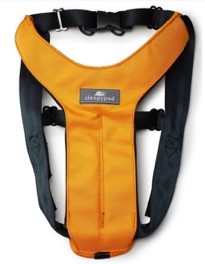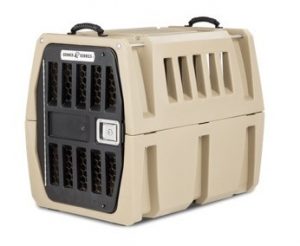Car-Ride Ready: How to Safely Secure Your Dog in Any Vehicle

Whether you’re driving your dog to daycare or taking them to a vet appointment, it is important to know how to properly restrain your dog to ensure their safety in your car.
Proper restraints are important
Not all restraints are created equal. Some may be fine for daily driving while others have been extensively evaluated by crash tests. The dog should always be in the backseat or the cargo area of an SUV.
Good

Any restraint is better than no restraint. A dog that is free in the car can distract the pet parent while they are driving, easily jump out when a pet parent opens the car door, and at worst become an unrestrained projectile in a car accident. This is dangerous for the dog and everyone else in the car.
- Pet parent ties the dog’s leash to the headrest, leash buckle or d-ring on the floor. The downside is that the leash can be difficult to tie at the correct length to give your dog room to be comfortable but still be properly restrained. The leash can also become unraveled during travel.
Better
- Restraints that are attached to the seat or inserted into the seat belt clip. This lets the pet parent quickly and easily secure the dog in the car. The leash should remain on the dog as well.
- Crates and carriers that are securely attached in the car. The dog should have the leash on even when in the crate or carrier unless there is an internal tether. This makes sure the dog can’t get free when the crate or carrier door is opened.


Best
Crash tested crates and harnesses are ALWAYS the best option for restraining dogs in the car. Center for Pet Safety crash tested and independently certified several products that included 3 safety harnesses, 2 travel carriers and 4 different travel crates.


Training Tips for Pet Parents
- Get the dog use to the harness, carrier or crate before using it in the car.
- Monitor your dog to make sure they aren’t chewing on the restraint. Spraying the restraint with a chew deterrent before every use will help to stop any problematic chewing.
- ALWAYS clip the restraint to a harness. If that isn’t possible, then clip the restraint to a flat collar. NEVER clip a restraint to a head collar, training collar or prong collar.
- It’s tempting to let a new puppy sit on your lap during a car ride, but the puppy will then have a more difficult time learning to sit in the back of the car. Start the puppy out right by safely confining them in the back seat or cargo area from day one.
What is legal in your state or province?
Each state and province have different laws regarding dogs traveling in cars. Do you know your laws? A few states have enacted laws that prohibit dogs from riding unrestrained while others have ambiguous language that can leave it up to a police officer to cite a driver for distracted driving if a dog is found unrestrained or on the lap of the driver. Keep your eyes on what is happening in your state as some states have proposed legislation. Here are a few examples:
- Maine, Connecticut and Arizona can use distracted driving laws to charge drivers who drive with pets on their laps.
- New Jersey considers driving with loose pets in a vehicle animal cruelty and can require a hefty fine or even jail time!











